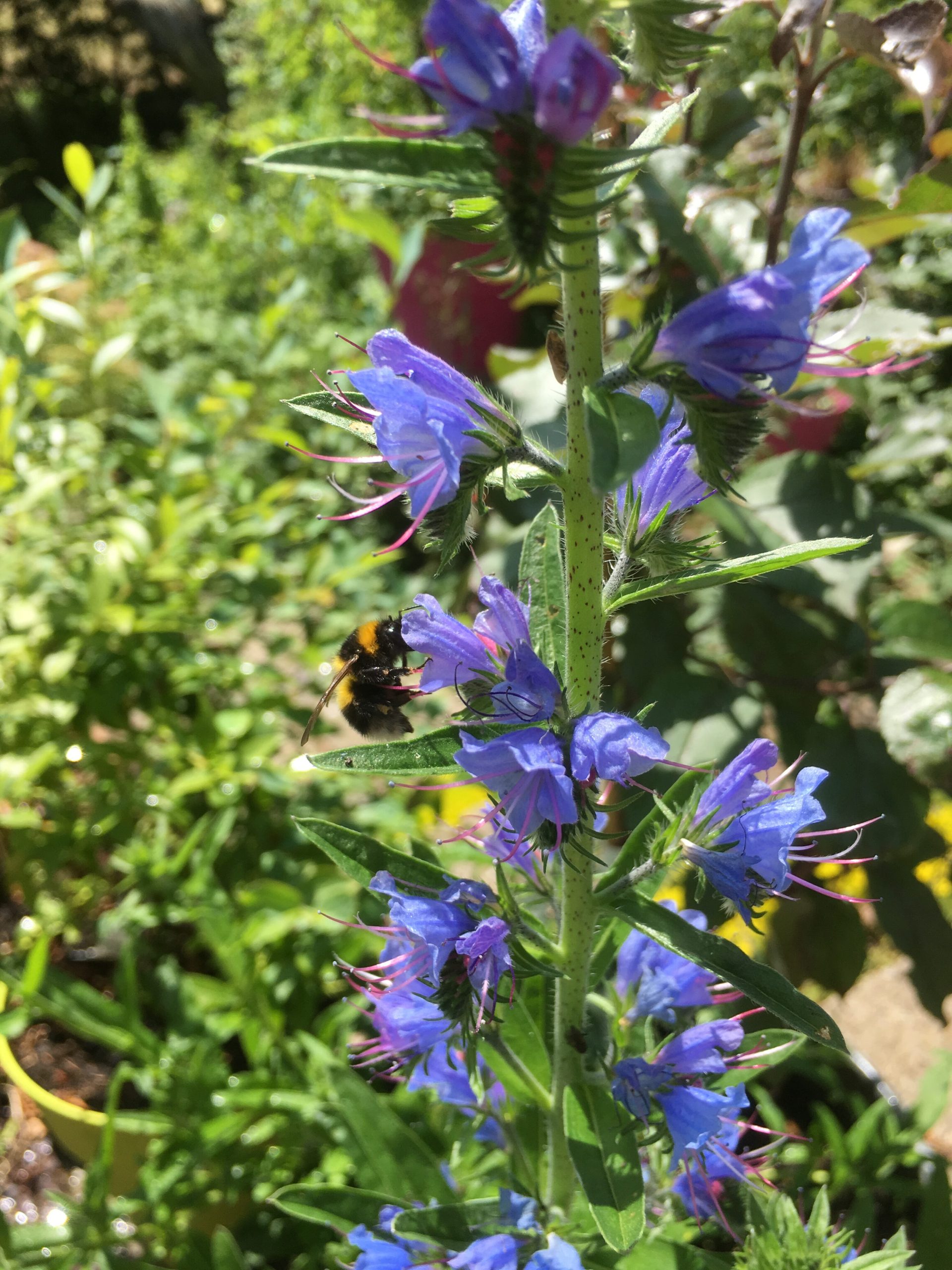If you want to grow one of the very best plants for pollinators, choose to grow Viper’s bugloss. It’s a native wildflower in the UK. It’s hardy and it’s easy to grow from seed.
Viper’s bugloss, botanically known as Echium vulgare is a fantastic plant for pollinators. It is a member of the borage family and like borage it replenishes its nectaries with nectar regularly throughout the day. It’s a magnet for pollinators and an important source of energy rich nectar for these precious creatures.
Self seeds
Viper’s bugloss self seeds. That means, once its flowers have been pollinated and the seeds have set and matured, they will drop to the ground beneath and germinate where they fall. This makes it a great plant for softer planting, cottage gardens and gravel because the self seedlings will soften the edges of the garden and grow up, mature and flower.
Biennial
Viper’s bugloss is a biennial which means it flowers in its second year and occasionally its third. Once it flowers the plant usually dies, but it will have produced copious amounts of seed to replace it and continue its presence in your garden. You can save the seed by cutting off the faded flower spikes. Put them in a large paper envelope to dry. Shake from time to time and the seeds will fall into the bottom of the envelope. You can sow them in late summer when they would naturally be sown directly from the plant. They will germinate into little rosettes of leaves and should flower next year or the year after.
Hardy
This species of echium is hardy, you may be familiar with the tall spires of the giant echium, Echium pinnianna that grows in sheltered walled gardens on the Isle of Wight, Cornwall and on the Scilly Isles. This species is not fully hardy and needs lots of TLC to get it through the winter. You might be lucky, but it is far easier to grow the hardy Viper’s bugloss if you want to support the pollinators and enjoy the spectacular blue flowers.

Leave a Reply